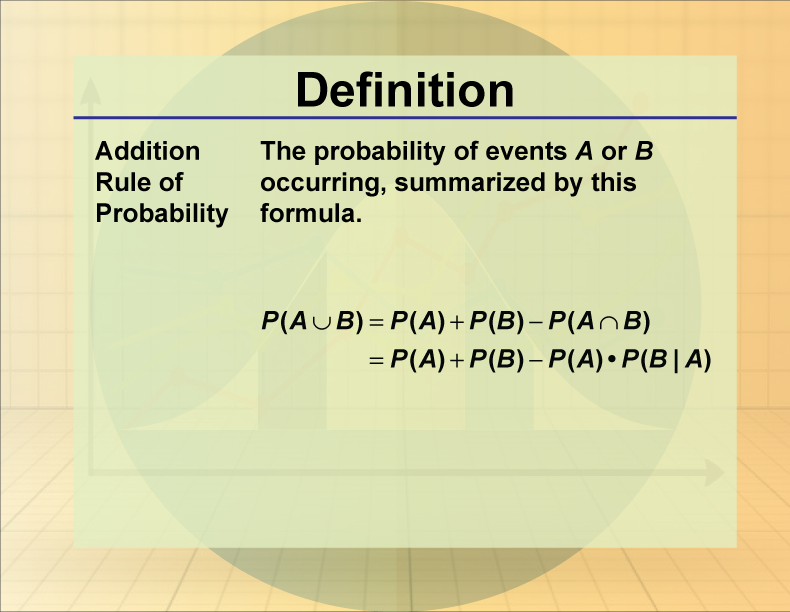
Display Title
Definition--Statistics and Probability Concepts--Addition Rule of Probability
Display Title
Addition Rule of Probability

Topic
Statistics and Probability
Definition
The Addition Rule of Probability is a key concept in statistics that helps in understanding the interaction between different events.
Description
The Addition Rule of Probability is crucial in the field of statistics because it allows us to make informed decisions based on the relationships between variables. For instance, in real-world applications, this concept is essential in various fields such as economics, social sciences, and health studies. Understanding how events affect each other can lead to better predictions and strategies.
In algebraic terms, the Addition Rule of Probability can be expressed as P(A ∪ B) = P(A) + P(B) - P(A ∩ B), where A and B are two events. This formula showcases how the probability of the union of two events is affected by their intersection.
This concept is important for math education because it lays the groundwork for more advanced statistical analysis.

For a complete collection of terms related to Probability and Statistics click on this link: Probability and Statistics Collection.
| Common Core Standards | CCSS.MATH.CONTENT.6.SP.B.4, CCSS.MATH.CONTENT.6.SP.A.2, CCSS.MATH.CONTENT.HSS.ID.A.1, CCSS.MATH.CONTENT.HSS.ID.A.2, CCSS.MATH.CONTENT.HSS.ID.A.3, CCSS.MATH.CONTENT.HSS.ID.A.4 |
|---|---|
| Grade Range | 8 - 12 |
| Curriculum Nodes |
Algebra • Probability and Data Analysis • Data Analysis |
| Copyright Year | 2020 |
| Keywords | statistics, probability |